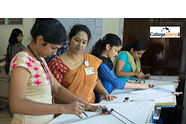
If you are worried about the Quantitative Techniques section of CLAT 2026, studying Vedic Math will provide you with a great advantage. Time-proven calculating methods will enable you to solve problems quickly and accurately, which is very important in a competitive exam characterised by rigid time limitations. Toppers highly suggest applying Vedic shortcuts in arithmetic, algebraic and number problems since these reduce solving time by nearly 40%. Nowadays, online and offline coaching centres equally incorporate these methods into their courses and are available to every aspirant. Mastering Vedic Math will not only enhance calculation but will also instil the quick thinking required to tackle tough problems confidently on the CLAT 2026 exam day.
Also Read: Tips to Prepare for CLAT Quantitative Techniques Section
Importance of Vedic Math for CLAT 2026
The importance of Vedic Math for CLAT 2026 exam is highlighted below:
- Vedic Math offers clever shortcuts to answer problems promptly, specifically in examinations where time is critical.
- The central problem in the quantitative section of CLAT is properly answering data-based questions within a constrained time.
- Using the Vedic Math methods, one can minimise long steps, avoid repeated mistakes in calculation and enhance precision.
- Faster mental calculation allows time to be spent on harder or awkward problems rather than exerting effort on fundamentals.
- Through effective time management, one feels relaxed and confident while facing pressure in examinations and performs well overall.
- Toppers also make use of mental mathematics like Vedic Math to their benefit because a few minutes saved will be added to their marks.
Popular Vedic Math Shortcuts for CLAT 2026
Here are some tested and proven Vedic Math shortcuts that will help you crack the CLAT 2026 Quant section:
- Vertically and Crosswise Multiplication: This technique enables you to multiply two or even three-digit numbers quickly. For example, to multiply 23 × 45, break the calculation into steps and use place values (ones, tens) to find the result mentally. It's a lifesaver for Data Interpretation (DI) and rapid numerical questions.
- Base Technique for Squaring and Multiplication: When you need to square a number close to a base such as 10, 100, or 1000, this tip speeds up the process. For instance, to find the square of 98, take 100 as the base and calculate the difference. This is especially useful when working against time.
- Multiplying by 5 Trick: For any even number, halve it and append a zero. For an odd number, subtract one, halve it, then add five at the end. For example, 2244 × 5 becomes 1122 and a zero, making 11220. This shortcut is handy for various questions in CLAT data sets.
- Digit Sum and Unit Digit Method: Adding digits helps verify calculations or determine the unit digit in large products. This speeds up error-checking and helps eliminate incorrect options quickly.
- Approximation Methods: Rounding numbers allows swift estimation of percentages or fractions, which is essential for passage-based questions. For example, to estimate 37% of 218, round to 40% of 220 before calculating the exact answer.
- Rapid Square and Cube Roots: Memorise squares up to 25 and cubes up to 10. This speeds up solving problems involving powers. Use shortcut patterns such as for numbers ending in 5: n×n=(n−5)×(n+5) for quick verification.
Key Vedic Math Shortcuts Table for CLAT Quant 2026
Shortcut Name | Where to Use | How It Works | Examples |
|---|---|---|---|
Multiplication by 5 | Quick data calculation | Halve & add zero/five | 3545 × 5 = 17725 |
Digit Sum Method | Error checking/unit digit | Sum till single digit | 1238: 1+2+3+8=14→1+4=5 |
Vertically & Crosswise Method | Multiplying 2-3 digit numbers | Place-wise calculation | 23 × 45 = 1035 |
Base Method For Squaring | Squaring near base numbers | Difference from base | 98² = (100-2)² = 9604 |
Percentage Approximation | Data sets, fraction questions | Round & estimate | 37% of 218 ≈ 80 |
Quick Squares/Cube Roots | Powers, roots questions | Pattern recognition | 25² = 625 |
Pro Tips for Using Vedic Math Shortcuts in CLAT 2026
To excel in the Quant section of the CLAT 2026 exam, you need both accuracy and speed. Since questions now appear as data interpretation passages, it is beneficial to be familiar with Vedic Math. Here are some expert tips for applying Vedic Math shortcuts in CLAT 2026:
- Use Vedic Math in data related to sales, profit, or percentage. The faster approximations will help to eliminate wrong choices at once and save valuable time.
- Practice mental calculation during mock tests instead of relying on written steps each time. This habit helps develop greater accuracy under pressure in exams.
- Search for educational videos on YouTube where established channels like LegalEdge and Law Prep Tutorial explain shortcut strategies using simple examples specifically designed for law candidates.
- Keep a personal notebook on Vedic Math shortcuts with solved problems. Regular revision helps to remember and instils exam-day confidence.
- Monitor peer-learning forums to locate other advice and how former toppers employed these tricks and shortcuts.
Related Reads:
Continuous application of Vedic Math techniques and shortcuts for CLAT 2026 preparation enables you to solve Quant problems much quicker and with fewer errors. It hones accuracy, instils confidence, and makes you a cut above others. You do not take recourse to guesswork; instead, you tackle questions with inbuilt approaches, enhancing your prospects against thousands of test-takers every year.
Are you feeling lost and unsure about what career path to take after completing 12th standard?
Say goodbye to confusion and hello to a bright future!

FAQs
Vedic math can help you improve speed and accuracy in CLAT by teaching quick calculation tricks like the “Vertically and Crosswise” method for multiplication and simple mental math strategies. These reduce calculation time, minimise mistakes, and allow you to focus more on solving challenging questions, thereby boosting your confidence and overall exam performance. It is a great time-saver under exam pressure.
Vedic math shortcuts are quite effective for CLAT data interpretation as they help you solve calculations faster and more accurately. Using methods like crosswise multiplication and quick percentage tricks can save you time during the exam. However, practising these along with understanding the data carefully is key to scoring well in CLAT DI questions.
Vedic Math reduces calculation time in CLAT by using simple, smart shortcuts like the Vertically and Crosswise method for multiplication and the Base method for squaring numbers. These tricks enable you to perform mental math more efficiently, eliminate lengthy steps, and minimise errors, ultimately saving precious minutes to focus confidently on tougher problems during the exam.
For CLAT 2026, focus on these essential Vedic math techniques to speed up calculations: Vertically and Crosswise for fast multiplication, Base Method for squaring numbers, multiplication by 5 shortcut, and All from 9 and the last from 10 subtraction trick. These boost accuracy and speed in quantitative problems, which are important for CLAT.
Vedic math can definitely improve your time management in the CLAT quant section. By using simple, quick techniques like the Vertically and Crosswise method for multiplication and base methods for squares, you can solve calculations faster and more accurately. This saves precious minutes, letting you focus on tougher questions confidently. It’s a smart way to boost speed and reduce stress in the exam.
Was this article helpful?




















Similar Articles
Expected rank for 30 marks in SLAT 2026
UGC NET Law December 2025 Most Important Topics for Last Minute Revision
Expected rank for 40 marks in SLAT 2026
Expected rank for 50 marks in SLAT 2026
What is a Good Score in SLAT 2026?
Government Jobs after LLB